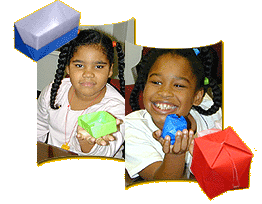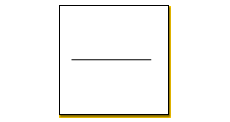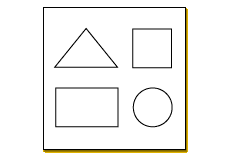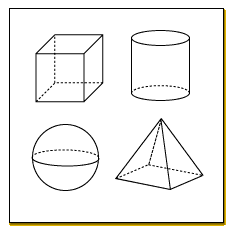

We live in a world of three dimensions. We move through space , either left or right, forward or backward, up or down. Everything around us, from the houses we live in to the objects we use in everyday life, has three dimensions: height, length, and width. But our three-dimensional world is often represented in two dimensions (or flat planes) in the pages of books, on the posters in our bedrooms, on our television screens, even on our computer monitors.

What are all these different dimensions about, anyway? Let's start at the beginning, with zero!
Zero Dimensions: A point has zero dimensions. There's no length, height, width, or volume. Its only property is its location. You could have a collection of points, such as the endpoints of a line or the corners of a square, but it would still be a zero-dimensional object.

One Dimension: Once you connect two points, you get a one-dimensional object: a line segment. A line segment has one dimension: length.

Two Dimensions: A flat plane or shape is two-dimensional. Its two dimensions are length and width. Polygons, such as squares and rectangles, are examples of two-dimensional objects. Two-dimensional objects can be rotated in a plane.

Three Dimensions: The objects around you, the ones you can pick up, touch, and move around, are three-dimensional. These shapes have a third dimension: depth. Cubes, prisms, pyramids, spheres, cones, and cylinders are all examples of three-dimensional objects. Three-dimensional objects can be rotated in space.

Four Dimensions: What?! Just when you think you've got it all figured out, scientists start adding more dimensions. Most physicists, including Einstein , describe the fourth dimension as time. This fourth dimension is essential when studying an event. For example, imagine you are going to a party at the corner of 7th Avenue and 2nd Street on the 4th floor. You could abbreviate that location with the coordinates 7, 2, 4, representing the three dimensions of space. But in order to describe an event, you need to add a time and/or fourth coordinate. If the party is at 3 pm, your coordinates for the event would be 7, 2, 4, 3. So time is an essential dimension for discussing events.
Image Credits:
All Photos: courtesy of AMNH




 Biodiversity
Biodiversity
 Brain
Brain
 Genetics
Genetics
 Marine BiOLogy
Marine BiOLogy
 MicrobiOLogy
MicrobiOLogy
 PaleontOLogy
PaleontOLogy
 ZoOLogy
ZoOLogy
 AnthropOLogy
AnthropOLogy
 ArchaeOLogy
ArchaeOLogy
 Astronomy
Astronomy
 Climate Change
Climate Change
 Earth
Earth
 Physics
Physics
 Water
Water

